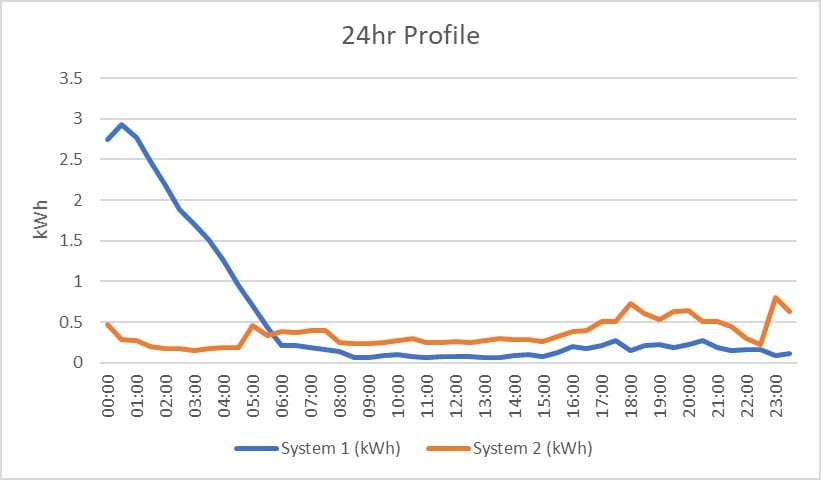
A housing association client of ours needed to replace old storage heaters with a new electrical heating system. Rather than a like-for-like replacement, they wisely decided to monitor the energy and cost performance of 3 different potential replacement systems before committing to a mass roll out. They asked the Suss Housing team to analyse energy usage in order to identify a system which emitted the least CO2 as well as reducing cost to the residents.
16 homes in a rural Wiltshire village were selected for trialling 3 different electrical heating systems during the winter of 2019. The client realised that a simple comparison of “bills” before and after installing the new systems would not be sufficient due the number of confounding factors that affect the bill. To make the comparison more valid we designed the trial to take the following various factors into account:
• “before” and “after” bills – often this information is simply not available and in any case is often invalid because between the “before“ period and “after” period there could be different residents, different external temperatures and different energy tariffs.
• variations in property size, fabric and orientation can affect actual energy usage
• variations in occupancy of properties can also affect energy usage e.g. number of people and how long they are at home
• different households like (or can only afford!) different internal temperatures and this impacts energy usage
• different energy tariffs mean different bills which may not reflect the actual energy used and CO2 emitted.
From initial occupancy surveys we allocated the different heating systems as fairly as possible so that each system had roughly the same spread of homes and occupancy as possible.
Then using a combination of occupancy factors, standard baseline energy assessment of existing properties, degree day profiling, half-hourly energy monitoring, internal temperature monitoring and meter readings we carried out a multivariate analysis to show how much energy each different system used when compared to an expected amount.
For this analysis we found that an electrical system with advanced controls actually used less energy than a new storage heater system. We applied typical Economy 7 tariffs to 24 hour energy usage profiles and found that as well as using less energy, the electrical heating system would cost the resident less money for these particular properties.
Suss Housing were delighted that the monitoring project had identified a heating system that lowered costs to residents as well as offering better environmental performance through reduced CO2 emissions compared to the old storage heaters and other systems trialled. If you are interested in performing energy analysis monitoring or any other Post-Occupancy Evaluation contact us at [email protected] or on 07718 647117.
